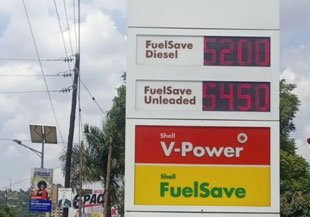Can E-Mobility Solve Uganda’s Fuel Crisis?
Uganda’s fuel crisis has become a stubborn thorn in the side of motorists, businesses, and even everyday commuters. We keep hoping for prices to go low, or at the very least stabilize, but hey, guess that’s too much to ask for in today’s economy.
Fuel prices fluctuate wildly, sometimes skyrocketing overnight due to global oil price shifts, supply chain disruptions, and economic factors beyond Uganda’s control, you simply wake up one morning and you have to pay the extra 200 shillings for a liter of “power juice”, which in itself may sound little enough, but trust me, it makes all the difference.
With the country still years away from producing its own oil, many of us can’t help but ponder the possibility of e-mobility being the game-changer Uganda needs. We see electric motorcycles often enough around Kampala, perhaps those few saw something the rest of us fuel consumers haven’t quite noticed. Well, I did some research for you, here are some notes.
Uganda’s Persistent Fuel Crisis.
Fuel prices in Uganda have been a rollercoaster for years, which, for a country that relies entirely on imported petroleum products, makes us vulnerable to external shocks. Any global oil price surge, transportation bottleneck, or geopolitical crisis sends fuel costs soaring. The COVID-19 pandemic and the Russia-Ukraine war exposed just how fragile Uganda’s fuel supply chain is…we all probably still remember the price hike that season.
As of recent reports, petrol prices in Uganda are hovering somewhere around UGX 5,000 per liter, significantly increasing transport costs, food prices, and overall economic stability. This high cost of fuel makes public transport expensive, increasing the financial burden on ordinary Ugandans.
While the oil reserves in the Albertine region promised some relief, commercial production has faced many delays (as any other project usually does), with the estimated timeline for oil production in constant shifting, meaning the country’s dependence on fuel imports won’t end anytime soon. This brings me back to my debate–where does e-mobility fit into this mess, and more importantly, is it the salvation to our fuel crisis?
E-mobility, which generally means “powered by electricity instead of fossil fuels” has been gaining notable adoption globally as a cleaner and more sustainable alternative to traditional fuel-powered transport. Uganda, too, has started embracing the trend, particularly with electric motorcycles (e-bodas) and electric buses, particularly under Kiira Motors, Uganda’s very own automotive-making company.
Pros of E-Mobility in Uganda
Lower Operational Costs – One of the biggest advantages of e-mobility is the reduced cost of running an electric vehicle (EV). Charging an electric boda-boda costs about UGX 3,000–5,000 for a full battery, which can last an entire day—much cheaper than fueling a petrol-powered motorcycle.
Less Dependence on Imported Fuel – Widespread e-mobility adoption would reduce Uganda’s vulnerability to global fuel price fluctuations. With a strong electricity infrastructure, EVs could be powered by locally generated hydroelectric energy, making transport costs more stable.
Environmental Benefits – because why not, the whole world only now seems to realize we need the earth to survive. Kampala’s air pollution problem is worsening due to traffic congestion and vehicle emissions which can easily be mitigated with Electric vehicles producing zero emissions, making them an eco-friendly alternative that could significantly improve air quality.
Growing Local Industry – Companies like Kiira Motors Corporation and Zembo Motorcycles are leading Uganda’s e-mobility sector. Supporting local EV production could create jobs and boost the economy.
The Challenges Holding Back E-Mobility
High Initial Cost – While e-bodas have lower running costs, the upfront purchase price is still higher than fuel-powered motorcycles. Without affordable financing options, many riders find it difficult to make the switch.
Limited Charging Infrastructure – Unlike petrol stations, charging points are still scarce in Uganda. Without widespread charging stations, EV users may struggle with range anxiety, limiting adoption and overall reach. I definitely can’t imagine someone using an EV to a village route because once that battery charge runs out, they are stranded.
Electricity Reliability Issues – Uganda generates plenty of electricity, but power outages remain common in some areas. If the electricity supply isn’t stable, relying on EVs could be risky.
How Does Uganda Compare to the Rest of East Africa?
Uganda has made quite some progress with e-mobility, that is to say rise in electric boda boda riders and expanding charging stations, we are still behind regional peers like Kenya which has a more extensive charging network and a growing fleet of electric matatus (public minibuses). Tanzania is also catching up, especially in urban centers like Dar es Salaam.
However, Uganda is showing promise with Initiatives like the recent E-Mobility Expo in Jinja and the rise of electric boda-bodas in Kampala are indicators that the country is on the right path.
Can E-Mobility Solve Uganda’s Fuel Crisis?
The answer? Not immediately—but in the long run, it can perhaps take us there.
For e-mobility to truly ease Uganda’s fuel crisis, the government, private sector, and consumers must work together and adopt it. Expanding charging infrastructure, making EVs more affordable, and ensuring a stable electricity supply are some key factors that will have to be addressed.
While e-mobility alone may not completely replace fuel-powered transport in Uganda overnight, it presents a viable long-term solution to reducing the country’s dependence on expensive, imported fuel.




